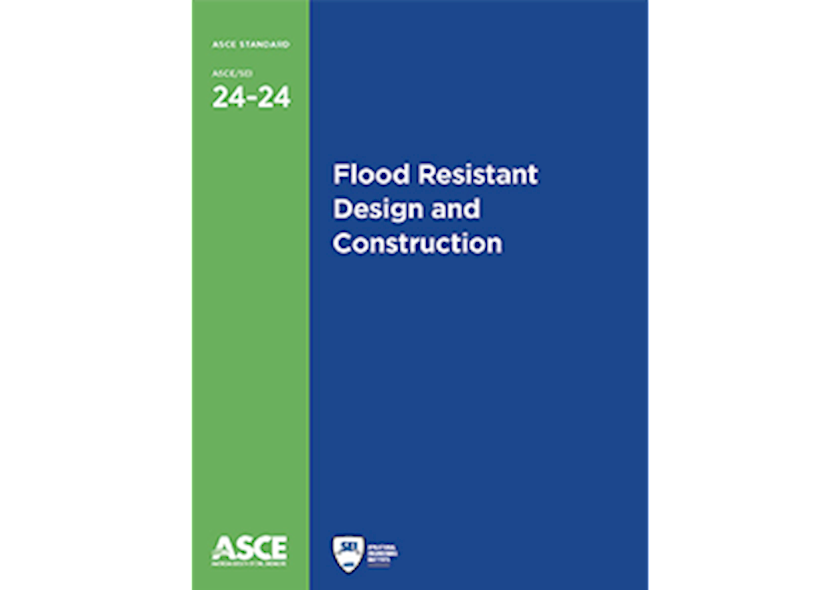Guidance on Structural Safety in Flood Areas: ASCE 24-24

Flood Resistant Design and Construction, ASCE/SEI 24-24
ASCE 24 provides minimum requirements for flood resistant design and construction of structures that are subject to building code requirements or floodplain management regulations in flood hazard areas and is intended to meet or exceed the requirements of the National Flood Insurance Program (NFIP). This standard applies to new construction, including subsequent work to such structures, and work classified as substantial improvement of existing structures that are not historic structures.
Key elements of the 2024 edition of ASCE 24:
- Alignment with the Supplement 2 of Minimum Design Loads and Associated Criteria for Buildings and Other Structures (ASCE/SEI 7-22)
- Updated for consistency with FEMA Technical Bulletins
- Updates to elevations, materials, and floodproofing
One of the most reliable ways to ensure increased performance and resilience of our nation’s built environment is the widespread adoption and enforcement of up-to-date, modern building codes and standards.
Who develops standards?
ASCE’s volunteer technical committees work collaboratively to develop standards that advance the civil engineering industry. The Structural Engineering Institute of ASCE and specifically the Minimum Design Loads and Associated Criteria for Buildings and Other Structures Standards Committee work on ASCE 7. Standards development is generally on a five-year cycle to revise or reaffirm existing standards. Voting members represent a cross-section of the industry including producers, consumers, and regulatory entities.
ASCE is an ANSI-accredited standards development organization (SDO). ASCE Standards provide technical requirements or guidelines for promoting safety, reliability, productivity, and efficiency in civil engineering.
What is new in ASCE 24-24?
- In alignment with ASCE/SEI 7-22 Supplement 2:
- The Flood Hazard Area is expanded to include land in the 500-year floodplain, and
- The Design Flood Elevation corresponds to the greater of the elevation set by the community or the elevation pertaining to the MRI flood event for the Flood Design Class plus Sea Level Rise;
- Clarifications to Flood Design Class for agricultural structures, hospitals, health care facilities, and ambulatory care facilities;
- Definitions for residential portions of mixed-use buildings and flood barriers and shields;
- Use of flood mitigation pumps and valves for passage of water and removal of accumulated water;
- Inspection and maintenance needs and flood emergency operation plans; and
- Placement of attendant utilities and equipment; and automatic pressure control valves for gas and fuel supply lines.
How does ASCE 24-24 help communities?
ASCE 24 provides guidance to design and construction in flood prone areas. The disasters resulting from Hurricane Helene (Sept 2024) and Hurricane Harvey (Aug 2017) are examples of the devastation caused by flooding. Major flooding events can lead to large-scale damage to homes, disruption of life-sustaining services, and transportation and supply chain delays. Community officials, floodplain managers, and design professionals can apply this standard to protect public safety and property.
Who is using it?
ASCE 24-24 is a primary reference for structural engineers and registered design professionals to evaluate measures that may reduce vulnerability to future floods. It covers the basic flood requirements, as well as high-risk and coastal hazard areas. Using this standard, engineers can focus on key structural areas, including foundation design, materials to use in flood zones, floodproofing, and electrical and plumbing systems. Structural engineers, design professionals, code officials, floodplain managers, and building owners will find this guidance on design and construction in flood prone areas essential. The standard is adopted by reference in model building codes.
ASCE 24-24 is available in:
- Print (Soft Cover)
- E-book PDF
- Interactive digital access on the ASCE AMPLIFY platform

